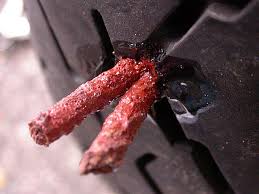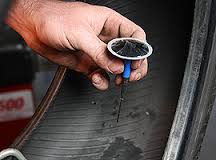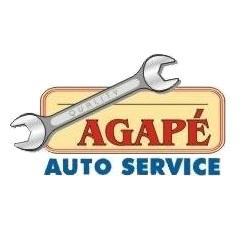 As the weather warms and school lets out the amount of vehicles on the road increases; so does road debris and the chances of getting a flat tire. Not only is this an inconvenience but at high speeds this can be dangerous. Once you notice that you have gotten a flat pull over to a safe area, turn on your hazards, and call for the nearest tow service to help get you to an automotive repair shop.
As the weather warms and school lets out the amount of vehicles on the road increases; so does road debris and the chances of getting a flat tire. Not only is this an inconvenience but at high speeds this can be dangerous. Once you notice that you have gotten a flat pull over to a safe area, turn on your hazards, and call for the nearest tow service to help get you to an automotive repair shop.
Now the real question: which should I get a patch or a plug? Unfortunately, this is not a question that can be answered simply. There are several factors to consider such as where the puncture is located, how large it is and is the puncture on an angle. With that being said here are a few guidelines for both the patch and the plug…
Plug it up: Pros and cons of the tire plug
- This is the cheapest and quickest option
- Plugs “vulcanize” to the tire allowing for another 20k miles on the road
- Can’t be used when the hole is near the sidewall
- Can’t be used when the puncture is not straight
- Plugs can be inserted without disassembling the tire. Although quick there might be more damage to the tire that can only be seen from the inside.
- Can’t be used on larger punctures (anything greater than ¼”)
Internal Patches with plug: it’s the icing on the cake
- Cost is significantly higher than a traditional plug
- Takes more time as your tire needs to be disassembled, mounted and balanced.
- The patch with plug option is the best way to ensure structural integrity of the tire.
- Can be used when the hole is near the sidewall
- Can be used when the puncture isn’t straight or there are two punctures right next to one another (like from a heavy duty staple)
- Sometimes the punctures are too large for this repair too and you just need to purchase a new tire.
We all know it hurts to walk barefoot on jagged rocks so we wear good sneakers. Your vehicle needs reliable sneakers too get in to see a trained automotive technician today to fix that flat and you can cruise on your way. #fixaflat #safetyfirst
